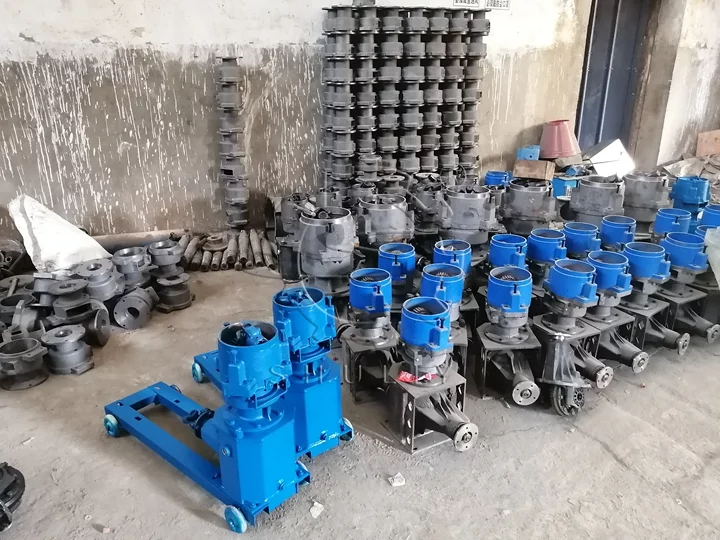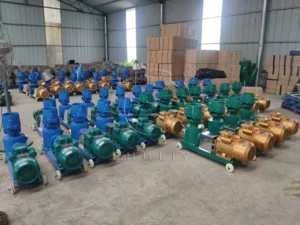Animal Feed Pellet Machine can processes various raw materials such as corn, soybean meal, and grass into uniform pellets, offering a reliable solution for farms, small feed factories, and family units.
The mill operates through a flat die design, with a rotating die plate and built-in pressing roller that efficiently compresses the raw materials into pellets. With a production capacity ranging from 80 to 1800kg/h, it provides flexibility for different production needs.
Why feed pellets to livestock?
Ruminant animals like cattle and sheep require feed tailored to their unique digestive systems, characterized by multiple stomach compartments and prolonged digestion times. Using feed pellets instead of powdered feed is a practical and beneficial approach for these animals.
- Optimized digestion. Pellets align with the slow digestion process of ruminants, encouraging continuous feeding.
- Enhanced efficiency. Powdered feed is less suitable, whereas pellets ensure better nutrient absorption.
- Customizable nutrition. Pellets can be formulated with specific nutrients and trace elements to promote animal health and growth.
- Improved feed conversion. Animals efficiently convert feed pellets into energy, optimizing performance.
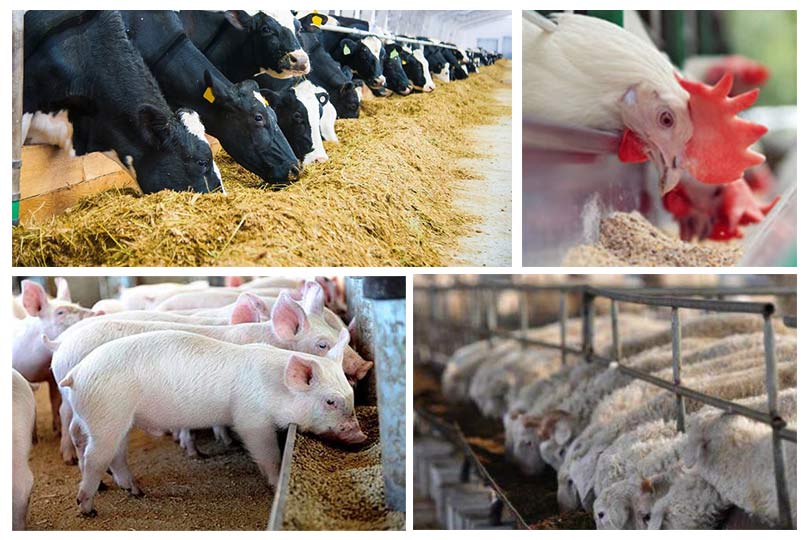
Structure of the animal feed pellet machine
The structure of the animal feed pellet machine is designed for efficiency and versatility, making it popular among small farmers and feed processing factories.

Key components
- Load-bearing bracket and wheels. Adds stability and mobility.
- Feed port. The hopper size can be customized.
- Main engine compartment. Includes pressure rollers and pressure plates.
- Discharge port. Where finished pellets are released.
- Motor and coupling. Ensures smooth operation.
Features
- Diesel-driven models offer similar structures but differ in power sources.
- Pressure plate apertures range from 2.5mm to 8mm.
- Pressure rollers are available in two, three, or four-roller configurations for higher output.
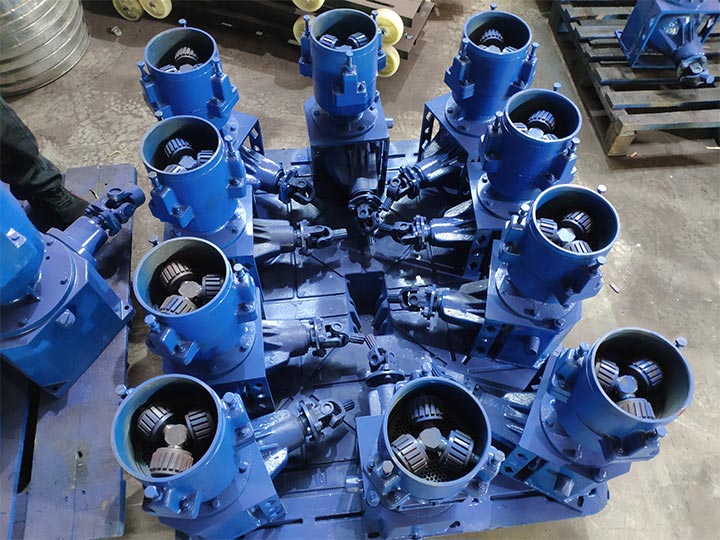
Working principle of the livestock feed pellet machine
The livestock animal feed pellet machine machine operates through a carefully designed process that ensures efficient pelleting, high nutritional value, and ease of digestion for animals.

- Material distribution. The rotating distributor, located at the top of the machine, evenly spreads the raw materials onto the surface of the die.
- Pressing process. As the materials move down, they are pressed into the die-holes by the rotating pressure roller, which forces the material through the die plate.
- Pellet formation. The extruded rod-shaped feed is then quickly cut into uniform lengths by the cutting roller and discharged through the outlet.
Key benefits of the pelleting process
- High temperature. The friction and high-speed rotation generate heat that kills harmful bacteria and microorganisms, ensuring the feed is safe for consumption.
- Digestibility. The pellets produced are easier to digest and have higher nutritional absorption efficiency for livestock and poultry.
- Storage & transport. Feed pellets are compact and easy to store, making them convenient for transport, especially during times of food shortages, such as in winter.
This process allows farmers to produce a large volume of high-quality, nutritious feed pellets, ensuring that their livestock is well-fed, even during difficult seasons.

What can be used to make animal feed pellets?
- Raw materials for animal feed pellets: crop stalks, forage, corn, soybeans.
- Corn and soybeans can be directly processed in the pellet machine.
- Crop stalks and forages need to be crushed into small pieces (around 3 cm) using a straw crusher machine.
- Ideal moisture content for optimal pelletizing: 10%-15%.

Small animal feed pellet machine processing plant
The complete animal feed pellet machine processing plant mainly includes straw crushers, mixers, pellet machines, coolers, etc.
Generally, when users produce animal feed pellets in large quantities, they will deploy the corresponding feed pellet formula according to the animal species and feeding plan of the farm.
Therefore, after the raw materials such as straw and forage are crushed, it is necessary to uniformly stir the raw materials with a mixer. The temperature of feed pellets is usually very high after processing and can be quickly cooled by means of a cooler with fans.

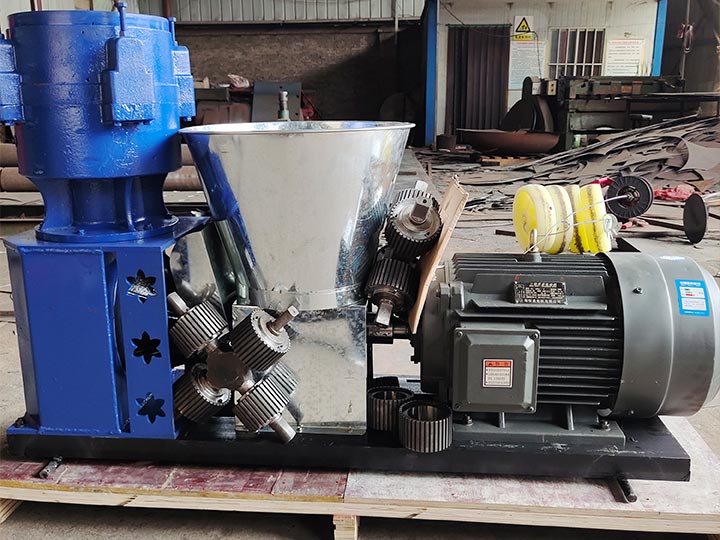
Parameters of the animal feed pellet machine
| Model | Power | Output | Dimension |
| SL-F-125 | Single phase, 4kw | 80-100kg/h | 850*350*520mm |
| SL-F-150 | Single phase, 4kw | 100-150kg/h | 850*350*570mm |
| SL-F-210 | Three phase, 7.5kw | 300-450kg/h | 990*430*710mm |
| SL-F-260 | Three phase, 11/15kw | 600-800kg/h | 1300*450*1100mm |
| SL-F-300 | Three phase, 22kw | 1000-1200kg/h | 1360*570*1150mm |
| SL-F-400 | Three phase, 30kw | 1500-1800kg/h | 1550*620*1250mm |
The price of the cattle feed pellet machine
The price of the cattle feed pellet machine is determined according to its model and output. In addition, the more mold customers buy, the higher the price of cattle feed pellet mill will be.
This kind of commercial livestock feed pellet machine usually has many models. Moreover, the processing output of different types of feed pellet mills and the voltage required for operation are different.
In addition, our factory usually customizes specific cattle and sheep feed pellet production programs for different customers according to their actual production needs, including raw material crushing, raw material drying and mixing, feed pelleting, continuous delivery, and packaging of finished products, etc.
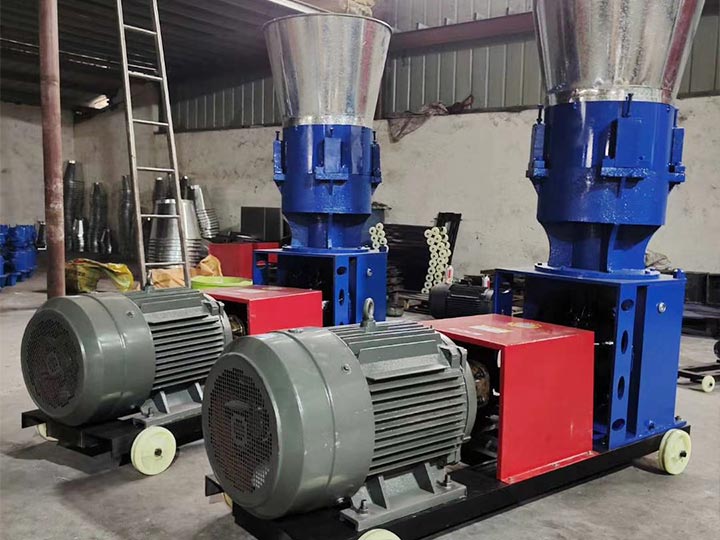
How does the poultry feed pellet machine work?
1. Prepare straws and other raw materials, and crush them
The raw materials for processing poultry feed pellets are diverse. The pellet feed is rich in nutrients and is conducive to the growth of animals. Generally, 5-6mm molds are used to make cattle and sheep feed pellets, so if the size of the raw material is greater than 6mm, then we need to use a straw crusher to crush it.
2. Stir the raw materials evenly
When granulating, raw materials generally adopt diversified combinations. Therefore, we need to use a mixer to mix the raw materials evenly to ensure that each feed pellet made is nutritionally balanced. If you think manual mixing is too troublesome, you can choose to use a feed mixer.
3. Use a granulating machine to granulate
Put the prepared raw materials into the poultry pellet feed machine, and then the feed pellets will come out of the machine’s discharge port. What needs attention in this step is the moisture of the material, which should be kept at about 10%~18%.

How to maintain the animal feed pellet machine?
The user must do a good job of regular maintenance and correct operation of the feed pellet machine to ensure that the machine has better working efficiency and a longer service life.
Operators should be familiar with the operating instructions of the feed pellet machine, be familiar with the performance, structure, and use of the machine, and carry out installation, commissioning, and maintenance according to regulations.
Hard debris should be removed from the raw materials to avoid damage to the animal feed pellet machine. Machine inspections should be carried out regularly. Focus on timely repair or replacement of the wear and tear of moving parts such as bearings and worm gears.
After the feed pellet machine is used up, the residue should be cleaned up in preparation for the next use.
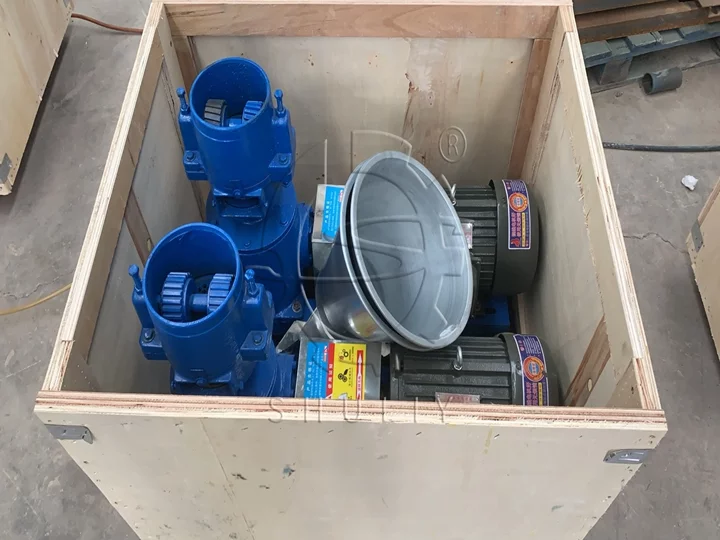
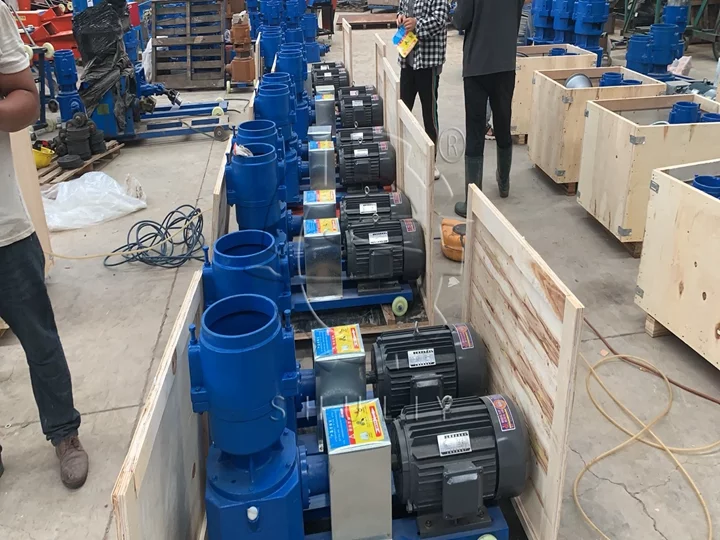
Invest in our livestock feed pellet machine
If you are intrigued by our Livestock Feed Pellet Machine or wish to learn more details, please feel free to reach out to us. Our dedicated team is ready to provide technical support and offer tailored solutions based on your requirements.
Moreover, we provide competitive pricing. We look forward to partnering with you in creating a thriving future for the livestock industry!

